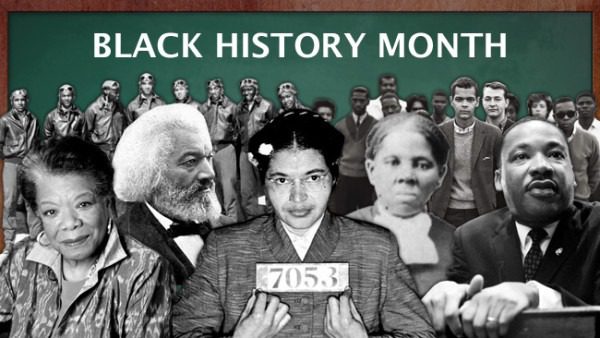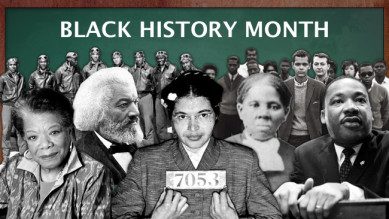Global Issues
Black History Month: Celebrating Zora Neale Hurston -By Charles Anyiam


Part of my ritual for celebrating America’s Black History Month which is traditionally observed every February has been to identify with the story of the struggle, freedom and aspirations of African Americans. This year, I was among visiting journalists who were hosted by the City of Fort Pierce in the St. Lucie County of Florida to mark this auspicious occasion. One of the highlights of the visit to this idyllic coastal outpost was to celebrate the life and times of one of the world’s most renowned authors, storytellers, anthropologists, and dramatists, Zora Neale Hurston.
Prior to this, I had never heard of Fort Pierce, only to discover that Zora had spent many of her years, especially her dying years, in this quaint and unspoiled east coast of Florida city of roughly 43,000 people. Considered one of the iconoclastic African American writers of her time, Zora was part of the Harlem Renaissance alongside her bosom friend and fellow writer Langston Hughes, with whom she was later to be estranged.
Born in rural Alabama on January 7, 1891, Zora was to move with her family to the first Blacks-only incorporated township in America, Eatonville, Florida where her father, a clergy rose to serve as mayor; a place she described as “a city of five lakes, three croquet courts, three hundred brown skins, three hundred good swimmers, plenty guavas, two schools, and no jail house.” However, the complexities of life’s exacting circumstances found her relocating to Fort Pierce where she lived and died, which is why this tiny but extra-ordinarily beautiful Florida city claims her as their own.
A free spirit, Zora traveled the world (a rare feat for a Black woman in those perilous days), as afar afield as Haiti where she dabbled into the mystical realm of voodoo or hoodoo worship of the natives; and the Bahamas, where she fell in love with the West African-accented music of the Bahamans.
In a letter to one of her colleagues, the equally mysterious Countee Cullen: Hurston wrote: “I have the nerve to walk my own way, however hard, in my search of reality, rather than climb upon the rattling wagon of wishful illusions.” After a stint at Howard University in Washington DC, Zora was to graduate from one of America’s most prestigious colleges for women, Barnard College in New York in 1928. Leading to her seminal work, Their Eyes Were Watching God in 1937, the precocious Zora had published a number of short stories and pieces on Black American folklorico in America’s notorious South. She was to hit the apogee of her career with the publishing of the masterful Moses, Man of the Mountain in 1939. Her genius was to be nationally and internationally acclaimed when in 1942, Zora’s autobiography Dust Tracks on a Road (which I am now re-reading) was published.
However, Zora’s apparent silence to some of the socially and racially volatile issues of her time bothered some of her critics. One of them was the illustrious Maya Angelou who soliloquised on Zora thus: “Why did Hurston write Dust Tracks on the Road? Whose song was she singing? And to whose ears was she directing her melody? Is this book a tale to appease a white audience? Does Hurston mean to show herself as a sleeping princess who will awaken to grandeur with the slightest kiss from a white prince?
“Hurston does imply that the nicest people she met in her youth were whites who showed her kindness. It was a white man, who, discovering her mother in labour, delivered Hurston into the world and afterward took a proprietary interest in her. Hurston recalls how the kindly crusty old man took the eight-year-old Black girl fishing and gave her advice that might have been William Shakespeare’s from the mouth of a Faulknerian Polonius. ‘He called me Snidlits,’ Zora wrote, ‘explaining that Zora was a hell of a name to give a child.
“Snidlits, don’t be a nigger,” he would say to me over and over. Niggers lie and lie! Any time you catch folks lying, they are skeered of something. Lying is dodging. People with guts don’t lie. They tell the truth and then if they have to, they fight it out. You lay yourself open by lying. The other fellow knows right off that you are skeered of him and he’s more apt to tackle you. If he don’t do nothing, he starts to looking down on you from then on. Truth is letter for courage. I want you to grow guts as you go along. So don’t let me hear of you lying. You’ll get along all right if you do like I tell you. Nothing can lick you if you never get skeered.”
In her foreword to Dust Tracks on a Road, Maya wrote the following: “There is a saying in the Black community that advises: ‘If a person asks you where you are going, you tell him where you have been. That way you neither lie nor reveal your secrets.’ Hurston had called herself the “Queen of the Niggerati.’ She also said, ‘I like myself when I’m laughing.’ Dust Tracks on a Road is written with royal humour and an imperious creativity. But then all creativity is imperious, and Zora Neale Hurston was certainly creative.”
According to author Valerie Boyd, Zora was ahead of her time. A colourful figure, Ms. Hurston became the most successful and significant black woman writer of the first half of the 20th century. “Zora knew how to make an entrance,” Valerie wrote. “By all accounts, Zora Neale Hurston could walk into a room full of strangers and, a few minutes and a few stories later, leave them completely charmed that they often found themselves offering to help her in any way they could.
“Zora also had a fiery intellect, and infectious sense of humour, and the ‘gift’ as one of her friends put it, ‘walking into the hearts,” Boyd wrote.
Beset by a string of unfortunate events, and cash-strapped because she never received the financial rewards deserving of her prodigious works, Zora re-located to Fort Pierce on the invitation of a local newspaper editor, E.C. Bolen to work as a writer for The Chronicle and later to teach English at all-black High School, Lincoln Park Academy. Her last days were spent living on the benevolence of family friends such as a local Fort Pierce physician Dr. Clem Benton who offered Zora a home free of charge to live and practice her craft – writing – until she died in 1960. That home is today managed and maintained by the Benton sisters, Arlena, a retired school teacher and Margaret, an attorney is on the U.S. National Register of Historical Homes.
“All she did while living here was to write and write, barely having time to eat when we brought her some food,” Arlena recalled. “And she spent a lot of time discussing her writings with dad who had known her and her family in Eatonville and in the Orlando area.”
Many years removed, her essence has finally shined through as the City of Fort Pierce has spared no expense to literally immortalise the legacy of Zora Neale Hurston with a Zora Festival to recognise her literary achievements, a library and a Zora Neale Hurston Exhibit. On that note, the affable Mayor Linda Hudson, said at lunch that: “Fort Pierce is on the verge of being discovered. And Zora’s time here in Fort Pierce is part of the rich culture and history of our city of which we are very proud.”
As a writer and a person of colour in America, the lesson derivable from the story of Zora Neale Hurston is the urgent imperative burdened on the conscience of humankind to celebrate and nourish the gift that are the talents amongst us while they are still able to cherish the adulation of both the adulators and beneficiaries of their uncommon ingenuity as we celebrate the life of Zora Neale Hurston.
That is my story. And I stand by it.
Charles Anyiam is Editor-In-Chief, The African Times-USA.

















